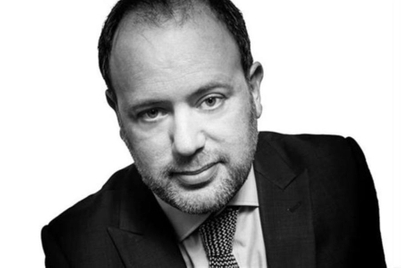.jpg&h=570&w=855&q=100&v=20250320&c=1)
Madison Avenue's tectonic plates shifted as Omnicom and Interpublic Group (IPG) announced a game-changing merger last night (December 9), forging what is set to become the world's largest advertising company.
The union of these two marketing titans—creating a $25.6 billion revenue colossus—has sent ripples through adland's corridors of power. As John Wren and Philippe Krakowsky paint a picture of data-driven harmony and technological synergy, the industry is abuzz with speculation about what this new dawn really means. The promise of $750 million in cost savings has sparked intense discussion, while questions emerge about everything from client conflicts to the future balance of creativity and scale.
Campaign speaks to industry leaders and analysts about what this transformative deal—dubbed by Richard Edelman as "the fourth big bang" of marketing—means for the future of the sector.
Arielle Garcia
Director of intelligence
Check My Ads Institute

Omnicom’s acquisition of IPG is yet another example of holding companies’ endless nearsightedness at the expense of long-term strategy. A key factor in Omnicom’s interest in IPG reportedly centers around Acxiom. Just like with IPG’s acquisition of Acxiom in 2018, the companies are touting that Omnicom will gain access to a wealth of their first-party data. Owning a third-party data broker does not miraculously render the data first-party. IPG effectively acquired a $2.3 billion paperweight. How do you turn that into shareholder value? You paint it gold, cover it in investor-friendly buzzwords, and sell it to someone before they realise that it is just that: A paperweight. It should be clear to anyone that has watched IPG publicly fail to meaningfully substantiate that acquisition, while hemorrhaging clients, that a sale would be the inevitable outcome.
The fact that the 'big wins' being discussed are this third party data trove, more clients to sell marked up media to, and $750 million in cost savings, says all it needs to about the future of the holding company model. Profitability has become inversely correlated to delivering value to clients, with more and more revenue derived from playing pinball with ad budgets than driving business growth. As I said when I left UM last year, holding companies are commoditising themselves into obsolescence. Being bigger certainly won’t fix that.
Duncan Meisel
Executive director
Clean Creatives

HP

Shubhranshu Singh
CMO, author, and industry observer

Ramakrishnan Raja
Principal
Resonant

With great scale comes great complexity. The merger will combine Omnicom’s 1,500+ agencies and IPG’s 90+ operating units, including networks like Mediabrands, McCann Worldgroup, and FCB. While this diversity enhances capabilities, it also compounds complexity. Cultural alignment will be a formidable task. Omnicom’s decentralised, creativity-driven model contrasts sharply with IPG’s tech-first, data-driven approach. Add to this the larger-than-life personalities and egos that define the ad industry. Reconciling leadership styles, agency autonomy, and competing visions will require extraordinary diplomacy. Lest we forget why the Omnicom-Publicis deal fell apart.
Technology integration and overlapping industries and clients add another layer of complexity, requiring careful management to avoid conflicts and maintain trust. Perhaps the most pressing risk, however, is client attrition—if clients feel caught in the cross-fire. Competitors like Publicis or WPP are well-positioned to poach these accounts by emphasising their own stability, data maturity, and sophistication. Players like Accenture Song and Deloitte Digital are rewriting the rules—combining superior tech prowess, strategic business insights with creative and media services, and offering clients a one-stop shop for full-stack solutions. The sobering reality is this: Agility trumps scale. The single biggest challenge Omnicom-IPG faces is overcoming the inertia of legacy structures.
CEO
Trinity P3

Omnicom's takeover of the IPG Group is continuing evidence that the major holding companies are pursuing a strategy of scale and efficiency in the face of multiple business and economic challenges. While it is evident this will mean consolidation across the new larger group, there are still plenty of options for advertisers going to market on a global or regional basis—not just with the remaining networks but with the rise of the independent networks too. The merger of OMG and Mediabrands will make 2025 very interesting. Let's remember the OMG and Publicis tried a 'merger of equals' in 2013 before cultural and client conflicts scuppered the deal. This is very much a takeover that will provide the opportunity to rationalise the underperforming media agency brands. A more interesting challenge in APAC will be the impact on the brand licencing arrangements that IPG has entered into for FutureBrands, McCann and others on a market-by-market basis.
Jay Pattisall
VP and principal analyst
Forrester



.jpg&h=334&w=500&q=100&v=20250320&c=1)


.png&h=334&w=500&q=100&v=20250320&c=1)




.png&h=334&w=500&q=100&v=20250320&c=1)

.jpg&h=268&w=401&q=100&v=20250320&c=1)



.png&h=268&w=401&q=100&v=20250320&c=1)


